It’s no secret among anglers that springtime is a great season for Walleye fishing. As water temperatures begin to rise, Walleyes move into shallow waters to spawn, providing anglers with an excellent opportunity to catch them there.

To help you put more Walleye in the boat during spring, we’re here to cover the essential Walleye fishing tactics, techniques, and tips in this article. Read on!
Understanding Walleye Behavior in Spring
It’s essential to understand the different stages of Walleye behavior throughout the spring in order to catch them successfully during this dynamic part of the year.

Early in the season, many Walleye anglers focus on pre-spawn fish, which are often found near the bottom – in about 15 feet of water or deeper. Here, they often congregate in locations that are en-route to the spawning areas.
As water temperatures approach 40°F, Walleyes move to their actual spawning grounds, which are typically found in shallow water near shoreline structures, inlets, rivers, and dams. Post-spawn Walleyes are more hungry since they need to recuperate after the stress of spawning. This makes them a prime target for anglers.
Water Temperature and Walleye Activity Level
Keep in mind that the activity level of Walleyes in spring is closely tied to water temperature.
In early spring, when the water is still cold, Walleyes are more lethargic and often unwilling to chase a bait that’s moving too fast. But as the water warms, their activity level increases, leading to phases of more aggressive feeding.
However, even during late spring, a cold spell can dampen Walleyes’ feeding behavior significantly, forcing you to change both your tactics and location.
Finding Spring Walleyes
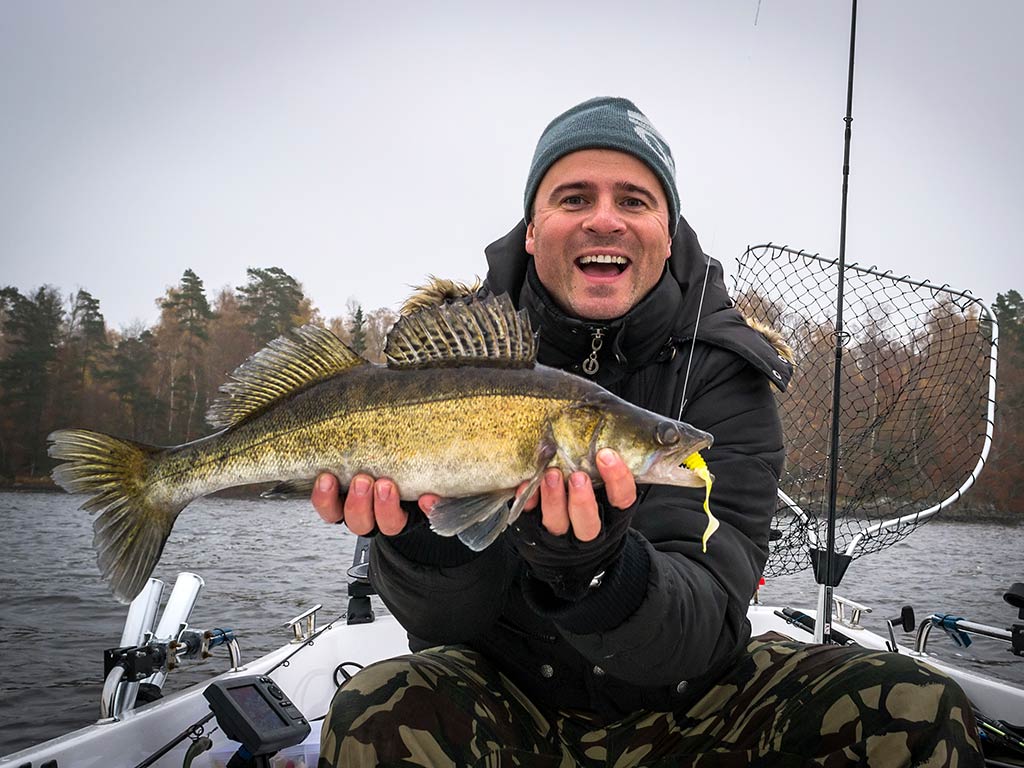
Understanding the different habitats that Walleyes frequent during the spring is critical for catching them at this time of the year. Based on my experience, finding the fish is 80% making sure your Walleye fishing trip ends in success in spring. It’s worth, therefore, repeating it: make sure you get this part right!
Structure Transitions
Walleyes in rivers and lakes will gravitate towards bottom structures and areas where the bottom composition changes. So, ideal spots to look out for are zones where the bottom transitions from mud to sand or from sand to gravel, as these areas can hold large concentrations of Walleyes.
Other structures, such as underwater humps, drop-offs, and submerged trees can also be highly productive fishing spots during the spring season.
Rock Piles and Reefs
In lakes and reservoirs, rock piles and reefs are prime spring Walleye habitats. These structures provide cover and attract bait fish, making them an ideal location for packs of Walleyes to wait and ambush their prey.
When targeting reefs and rock piles, use a combination of sonar and visual observations to identify key areas where the fish may be holding. Also, pay close attention to the depth and position of Walleyes relative to the structure, as this can provide valuable clues as to what they’re up to, and hence how to catch them.
Hard Bottom Flats
Flats, especially those with hard bottoms composed of gravel or cobble, can be very productive early-season Walleye habitats. In fact, these areas are often used by Walleyes as spawning grounds and thus attract large numbers of fish during the spring season.
When fishing flats, use lures to cover water efficiently and locate active fish, and then switch to live bait. While lures are better for covering more water, live bait is more likely to trigger a bite.
Lake Points and River Bends

When targeting flats, pay special attention to spots located near major lake points or river bends. These areas can act as funnels for Walleyes moving to and from their spawning grounds. And while you should fish these locations thoroughly, you also shouldn’t be afraid to move around until you locate fish.
Remember, spring Walleyes can be scattered, so covering lots of water and experimenting with different depths and presentations is paramount for success.
Transitions between Areas with Slow-moving and Fast-moving Currents
Walleyes in rivers during spring will often be found in areas where there’s a boundary between a strong current and slower-moving water. These zones provide a break from fast-flowing water, allowing Walleyes to conserve their energy, while waiting to ambush prey moving towards them in the current.
Examples of these areas include eddies, current seams, as well as wing dams. Make sure to focus on these locations when fishing for spring Walleyes in rivers.
How to Catch Walleye in Spring
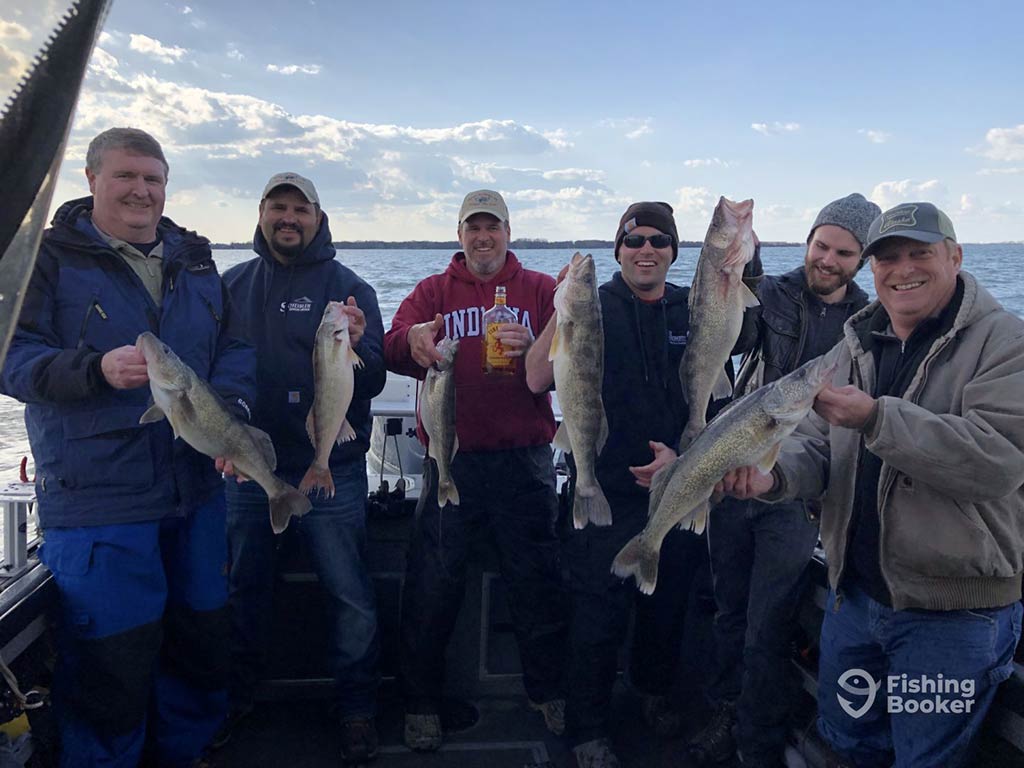
Let’s take a closer look at the best techniques and presentations for springtime Walleyes…
To maximize your success when targeting spring Walleyes, it’s crucial to adjust your strategy based on the spawn phase and water temperature.
During the pre-spawn and spawn periods, Walleyes will often be more focused on reproducing than feeding, so slow retrieval cadences paired with finesse presentations are usually effective.
Post-spawn Walleyes, on the other hand, become more active and hungry, so you can use more aggressive techniques to trigger bites from them.
Vertical Jigging
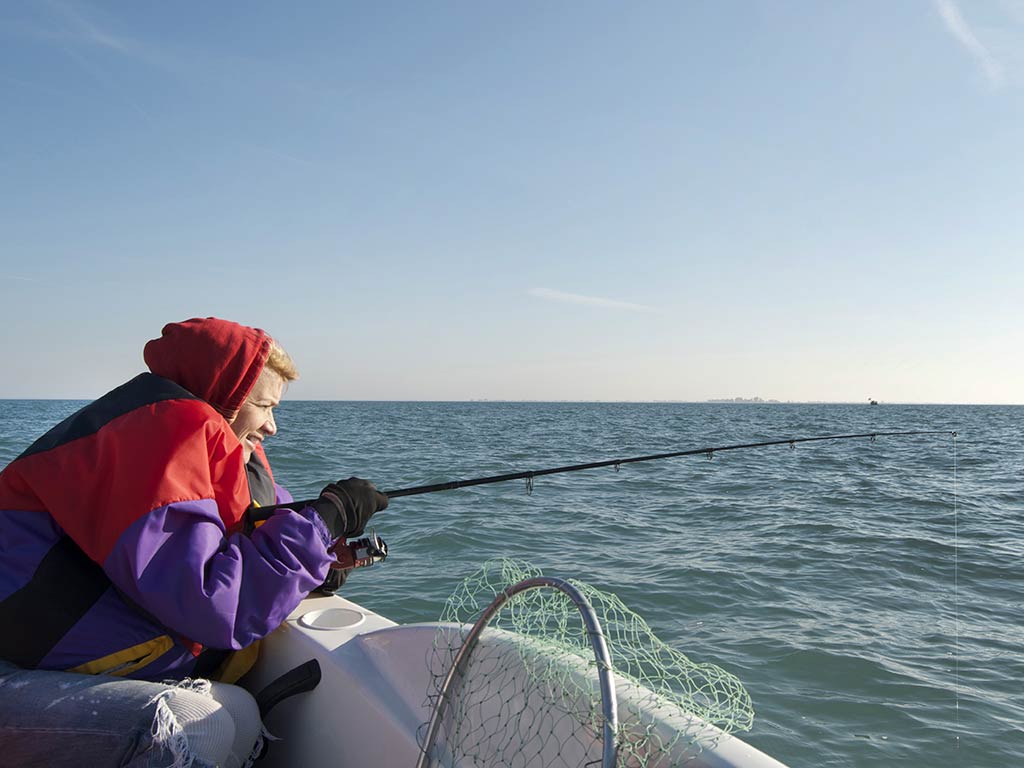
Vertical jigging from a boat is an effective method for targeting early spring Walleyes that are hugging the bottom in deeper water or holding tight to structure. Let your jig sink to the bottom, and then slowly lift your rod tip to make the bait dance enticingly before letting it fall back to the bottom. Keep a close eye on your line for any subtle strikes.
When dealing with more active fish, you can use snap jigging, which involves lifting your rod tip up very fast (ie. snapping up the jig), and then letting it sink down again slowly. Most bites occur while the jig is sinking.
Casting Jigs
Casting your jig is a great way to cover water in shallow coastal areas or flats. Cast your jig out and let it sink to the bottom before beginning a steady retrieve, punctuated by occasional lifts and drops of the rod tip. This technique can be used both from shore or from a boat.
Best Jigs to Use
When it comes to the best jig types to use for spring Walleye, I prefer round jig heads paired with paddle tail swimbaits, plastic grubs, or minnow imitations. When fishing close to the bottom I also like to use a ned rig, since it stands up straight when resting on the bottom. This can be very effective at triggering bites even when the fish aren’t feeding actively.
Some Walleye anglers swear by hair jigs, which provide a natural, subtle action in the water. Experiment with different colors, sizes, and styles to determine what works best in your local waters.
Shallow Crankbaits
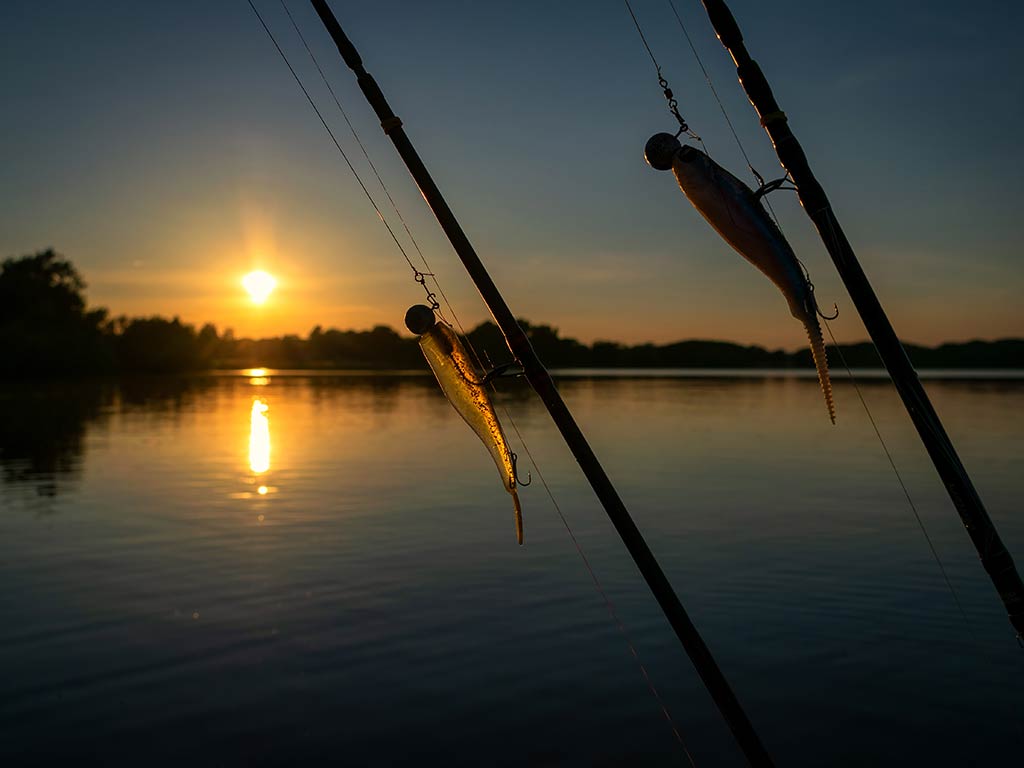
During the early stages of the spring season, shallow crankbaits or stickbaits can be an excellent choice for targeting Walleyes in shallow water. Cast these lures parallel to the shoreline or over flats, and use a slow, steady retrieve with occasional pauses and twitches. This erratic action can trigger aggressive strikes from hungry Walleyes.
Deep-diving Crankbaits
As water temperatures warm after the spawn, and Walleyes move into deeper water, deep-diving crankbaits start to come into their own. You can troll or cast these crankbaits along drop-offs, underwater humps, and other structure to cover water and find active fish.
By adjusting your trolling speed and the amount of line you let out behind your boat, you can control how deep your crankbaits are running. In my experience, it’s best to use sonar to determine how deep the Walleye are holding, and then adjust your crankbait depth accordingly.
Worm Harnesses
Worm harnesses are particularly effective during the post-spawn period when Walleyes are actively feeding and looking to replenish their energy reserves. The combination of a spinner blade, colorful beads, and a juicy nightcrawler are irresistible for hungry Walleyes.
The best way to do this is by pairing your worm harness with a bottom bouncer to keep it close to the bottom, which is the ideal strike zone for Walleye. For more details on how to set up this rig, check out this detailed guide on how to rig for Walleye.
Also, if you use a floating crawler harness, the added weight of the bottom bouncer will help you maintain contact with the bottom, while the floating crawler harness will lift the bait up and away from any snags.
Slowly troll or drift your worm harness along drop-offs, flats, and other Walleye hotspots to put more fish in the boat during the spring season.
How to Target Walleye in Spring Based on Their Activity Level
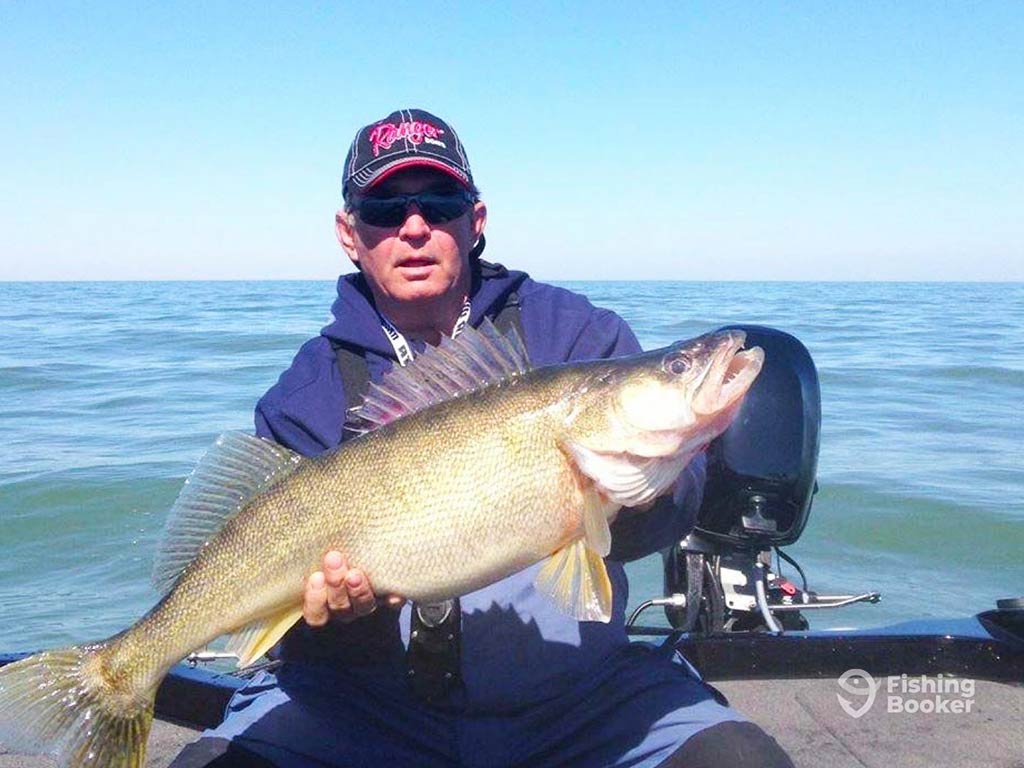
The activity and mood of Walleyes during the spring season can vary dramatically from hour to hour, and is tightly correlated with water temperature and the activity patterns of their forage.
When fishing close to structure, pay close attention to how the Walleyes are relating to the structure. If they’re hugging it tightly, they’re likely less active phase and will require a slower finesse presentation.
Conversely, if you notice that the Walleyes are suspended above the structure, or are actively chasing bait fish, you can often switch to a more aggressive approach to trigger strikes.
Spring Walleye Fishing Tackle
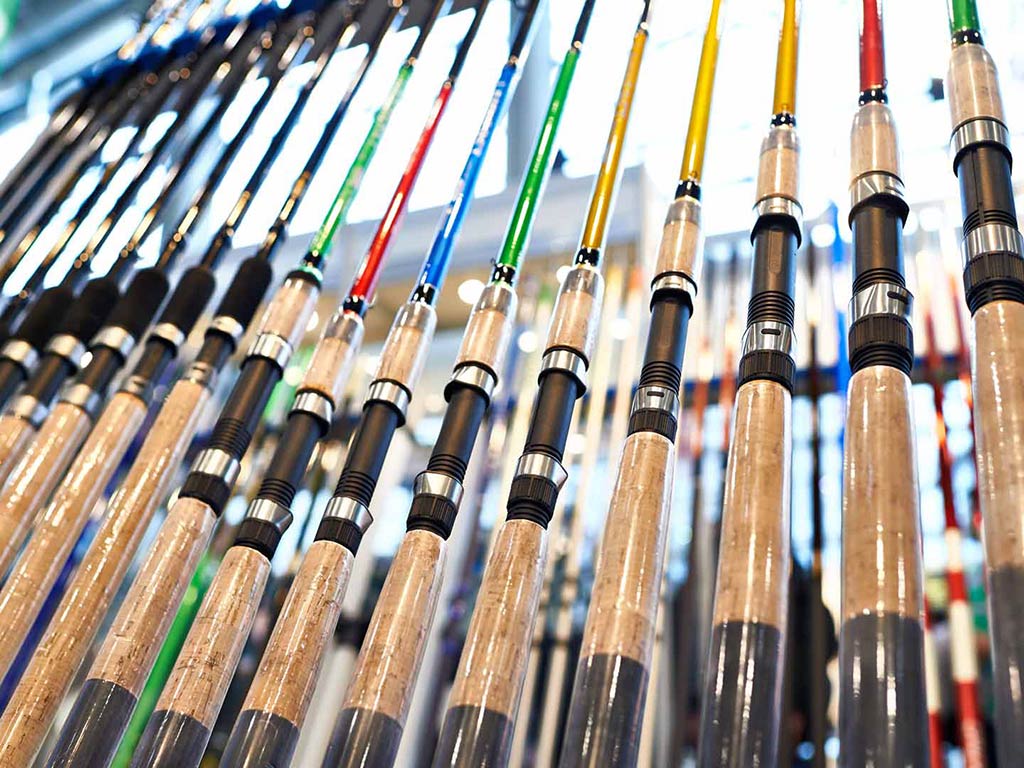
A great rod and reel setup for spring Walleye is a 6’6″–7′ medium-power, fast-action spinning rod paired with a 2500 to 3500-size spinning reel. This setup provides enough sensitivity to detect subtle bites, while also offering enough backbone for solid hook sets.
When it comes to line, braid is my favorite, as it offers excellent sensitivity and minimal stretch. But if you choose braid, my advice to use a fluorocarbon leader to reduce visibility and add abrasion resistance near the lure.
Finally, using the right hooks and terminal tackle will make a big difference in your success. Wide gap hooks are ideal for live bait, while a stinger hook can improve hook-up rates when using plastic trailers. Also, when fishing with crankbaits, I prefer to upgrade the standard treble hooks to premium models for improved hook setting performance.
Tips and Tricks for Spring Walleye Success
Fish Both Shallow and Deep
During the spring season, Walleyes can be found at a range of depths, so it’s crucial to be versatile in your approach. In the early morning and late evening, fish shallow areas near spawning grounds, where Walleyes are likely to be feeding. As the day progresses, try fishing deeper structure, as Walleyes tend to move away from the shallows around midday to avoid bright sunlight.
Pay Attention to the Water Temperature
As mentioned earlier, water temperature plays a significant role in Walleye behavior. So keep an eye on the water temperature throughout the day, and adjust your presentation accordingly. When the water is cold, slow down your retrieve and focus on fishing near the bottom. As the water warms, target more active fish with a faster retrieve and higher in the water column.
Use Sonar to Locate Fish

Modern fish finders and GPS units can be invaluable tools for locating spring Walleyes. Use your electronics to identify structure, bait fish schools, and temperature breaks that can attract ‘eyes. When you find an area with a good number of fish, mark it and repeat the process to establish a pattern for the day.
Adapt Your Presentation
Walleye fishing can be challenging, and the key to success is adapting your presentation based on the mood and activity of the fish. If you’re using a jig, experiment with different retrieval cadences, ranging from subtle twitches of the rod tip to more aggressive pops or steady swimming retrieves.
Similarly, with crankbaits, try varying the retrieve speed and adding pauses or erratic movements to trigger strikes from fish that are following your lure without committing to it.
Be Persistent and Patient
Catching Walleye in spring can be a test of patience, as the fish may be scattered or slow to bite. The best way to deal with this is to cover lots of water, while trying different techniques until you figure out what works.
Remember that catching large numbers of fish isn’t necessarily the goal. Sometimes you may want to focus on catching a trophy fish, which is a great strategy in spring, as the large females are heavy with roe.
Spring Walleye Fishing: A Worthy Season Opener
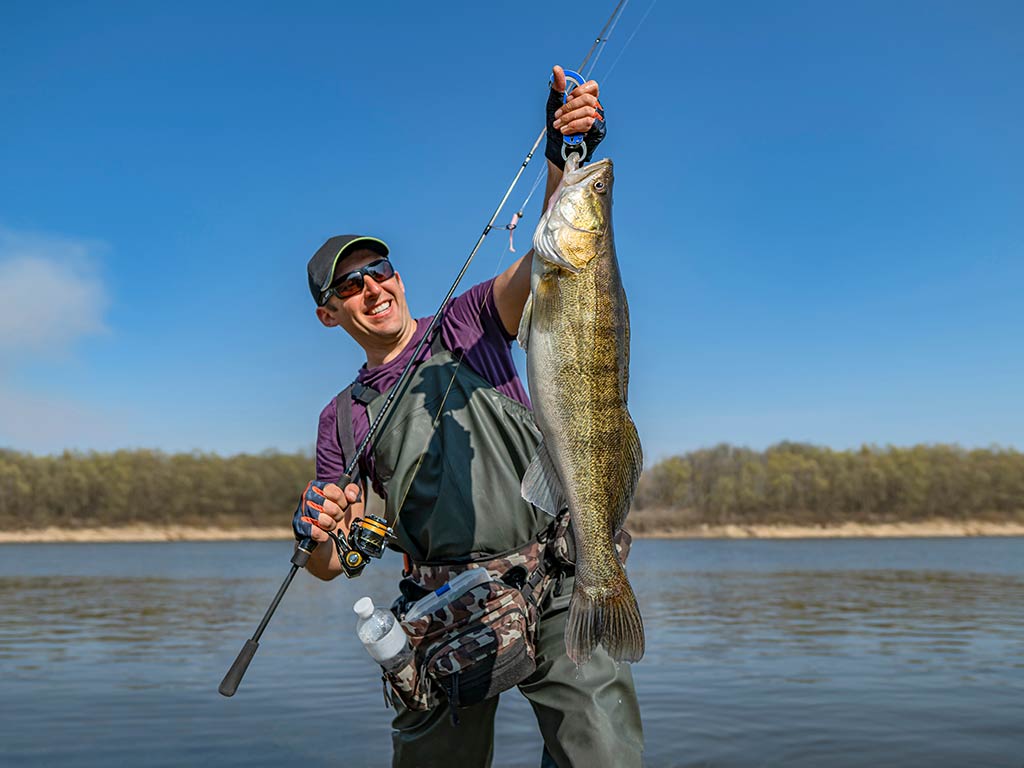
Spring Walleye fishing can be extremely productive for those anglers who take the time to understand fish behavior and adapt their tactics accordingly. By using the tips, techniques, and tackle outlined in this article, you’ll be well on your way to catching more and bigger Walleyes throughout the spring season. Tight lines and see you on the water!
Have you ever been spring Walleye fishing? Any tips and tricks you’d like to share? We’d love to hear from you in the comments below!
The post Spring Walleye Fishing: The Complete Guide appeared first on FishingBooker Blog.
https://ift.tt/YM2PF9m
0 Comments
Enregistrer un commentaire